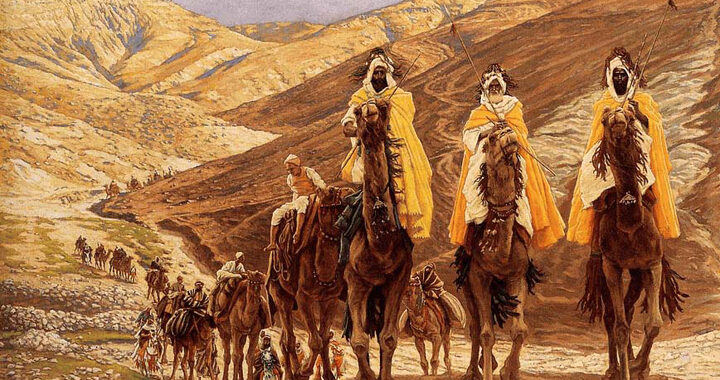We three kings of Orient are,
bearing gifts we traverse afar,
field and fountain, moor and mountain,
following yonder star.
Those words and the tune that conveys them evoke Epiphany. The coming of the Magi to pay homage to the Christ Child at Bethlehem is the festival’s focus, its alternate title being “The Manifestation of Christ to the Gentiles” (BCP p. 31).
Mention of the Gentiles signals how Christ’s light was shown forth not to the Jewish people alone but to all the peoples of the world. Coming from “the East” far beyond Israel, the Magi represent the world at large as they recognize the redeemer, the one who will restore humanity and the created order to God’s vision.
So Epiphany celebrates how the Incarnation is a universal gift. That’s one missional aspect of Epiphany.
Another missional aspect of Epiphany concerns the movement of mission.
Dutch missiologist Johannes Blauw pointed out in the 1960s that there is a difference in the movement of mission between the Old Testament and the New Testament. God’s light is shown forth to the world in both testaments, but there is a difference in how the world comes to know of that light.
In the Hebrew scriptures the emphasis is on Israel, and Jerusalem in particular, as the sanctuary of God’s presence and the source of God’s light to the world. The movement of mission is from the outside in toward the center, toward Zion. The world is to come to Israel, to Jerusalem, to Zion. There are exceptions, such as Jonah, but in general the gravitational pull holds. The Old Testament lesson for Epiphany states it clearly:
Nations shall come to your light,
and kings to the brightness of your dawn.
Lift up your eyes and look around;
they all gather together, they come to you. . . .
They shall bring gold and frankincense.
Blauw termed this movement from the outside to the center centripetal mission. We all know centripetal movement from the water in sinks and bathtubs when the plug is pulled out. The water circles toward the center.
Mission in the New Testament is, by contrast, always moving outward – out to reach new places, new peoples, new ethnicities. We see this in the ministry of the peripatetic Jesus insisting on traveling to ever more villages and towns, reaching out to lepers, prostitutes and tax collectors on the margins, crossing the Sea of Galilee to the Decapolis, extending grace to Roman oppressors, and learning from the Syro-Phoenician woman.
We see it in the work of the early church in Acts as the apostles, meaning “sent ones,” went beyond Jerusalem to Samaria, Antioch, Asia Minor, Greece and Rome. And, obviously, we see that outward vector in the history of the Christian movement since then.
Blauw termed the movement of the New Testament centrifugal mission. Have you ever tried to get off a children’s merry-go-round when it’s turning? If so, you know what it’s like to be flung outward. That’s centrifugal.
So what happens in Matthew’s story of the Magi is the culmination of the Hebrew scriptures’ centripetal mission. In coming to the Christ Child from beyond Israel, the Wise Men fulfill the prophecy of the world coming to the center. But their destination is not Jerusalem, though they do seek information there, rather the Child who is the culmination of all God’s promises.
With mission’s centripetal movement thus fulfilled, the mission movement reverses and becomes centrifugal throughout the rest of Matthew’s gospel as Jesus reaches outward. The centrifugal motion culminates in the risen Jesus’s charge to his disciples at the gospel’s end:
Go therefore and make disciples of all nations, baptizing them in the name of the Father and of the Son and of the Holy Spirit, and teaching them to obey everything that I have commanded you.
As a result, the gospel has reached the vast majority of the peoples, languages, nationalities and cultures of the world.
That’s as centrifugal as you can get.
Epiphany is the pivot.
– Titus Presler, executive director
Illustration: “The Coming of the Magi” by James Tissot, 1894 (Minneapolis Insitute of Art, courtesy of Vanderbilt Divinity School Library)
